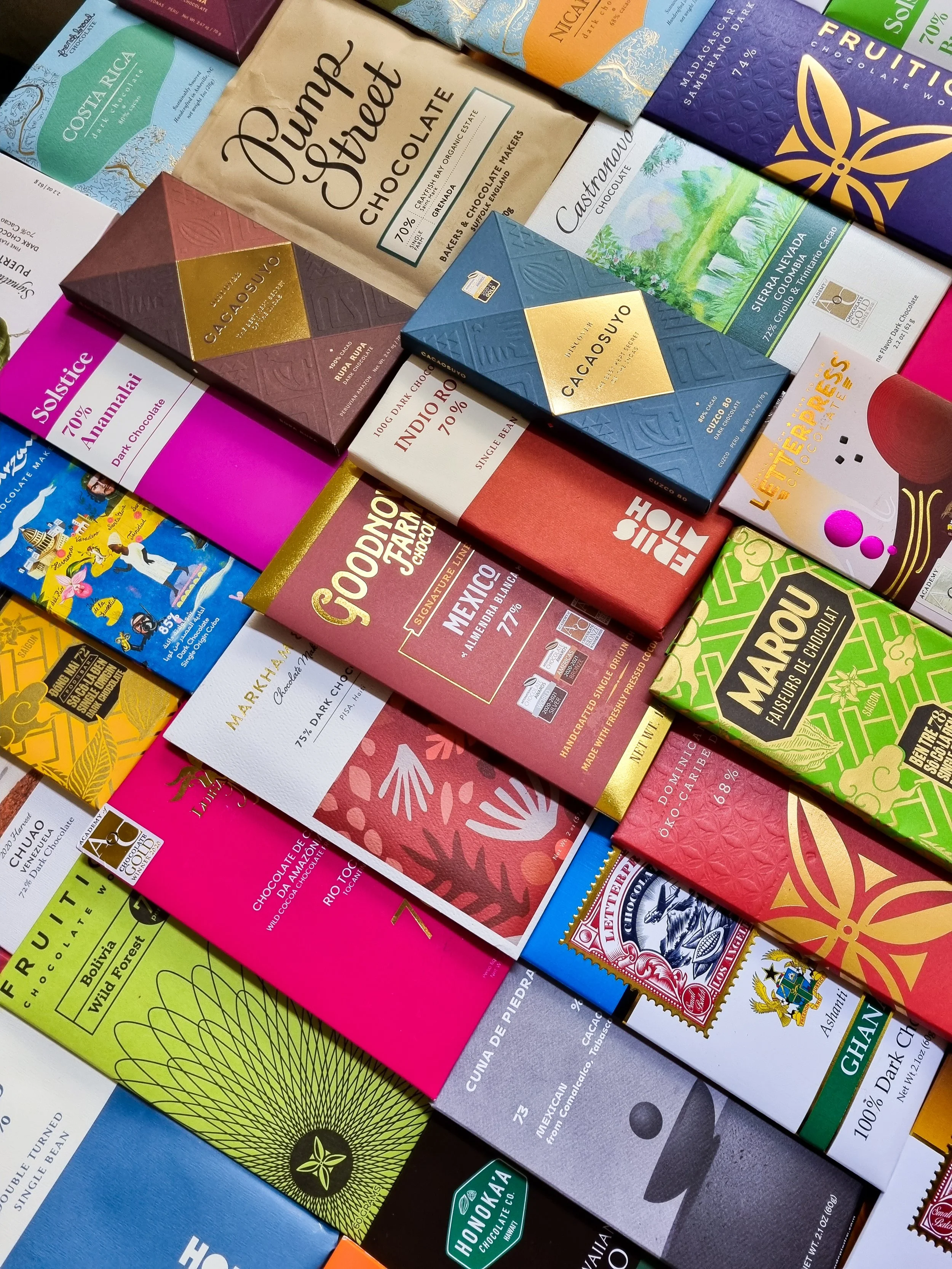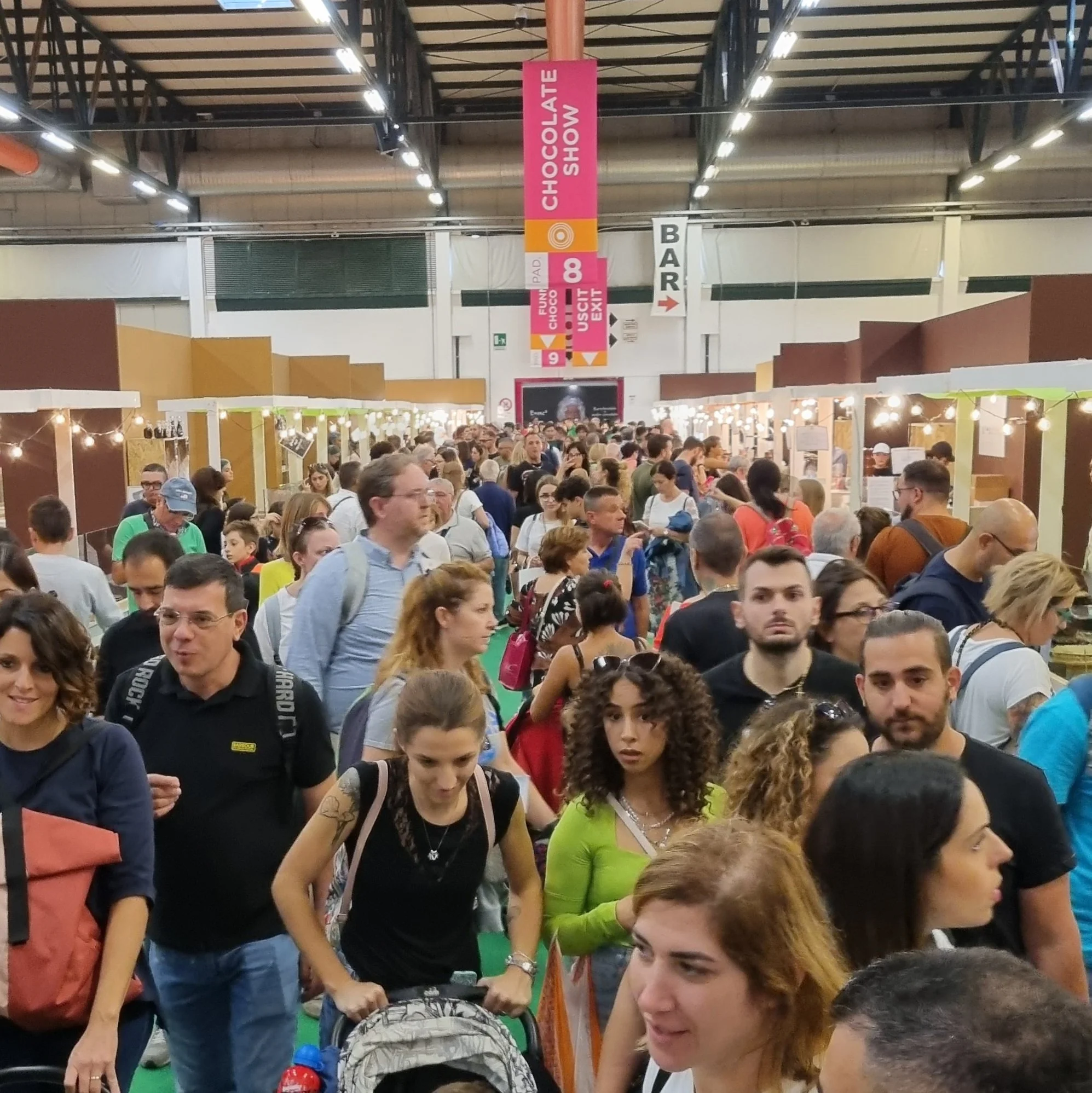The 10 Commandments of The Perfect Craft Chocolate Packaging
How many times have you bought a product because of its packaging?
Sure, you probably checked the ingredients list too. You might have also searched the company’s website. And you probably read all the reviews. But you took all those steps after what your eyes saw first: packaging.
A study conducted in 2020 on consumers’ behavior in the age of COVID found that the most significant factor in choosing an unfamiliar brand was unique design, followed by eco-friendly packaging and food product’s label. Consumers are more conscious than ever (in regard to environment, social and health matters), and surely packaging isn’t the sole factor they take into consideration during shopping. Yet, if they don’t like the packaging of a product, all the other factors won’t be even considered. “We eat with our eyes first” isn’t just a cliché. Packaging creates expectations in our brains that are fully part of the consuming experience.
Even craft chocolate, stronghold of fine flavor, ethical sourcing and passion-driven businesses, isn’t immune to the charm of packaging.
Why is packaging for craft chocolate so important?
The Opening Act
The tasting experience begins way before the chocolate reaches the mouth. Whether a golden foil is revealed or a thin layer of paper is unfolded, chocoholics anticipate the unwrapping of a craft chocolate bar just as much as its tasting. While the fingers run through the packaging, the heart rate increases and the anticipation builds up to the peak point where the naked bar is finally revealed in all its majesty.
The opening act is an unforgettable moment that sticks to the memory of every craft chocolate consumer, for the good and for the bad. If they had to toss and turn, struggle, or tear the precious packaging apart, consumers will get upset and won’t purchase that chocolate product again. You can’t blame them: they just paid 3x the average price of a chocolate bar, and they expect the packaging to be designed to deliver an enjoyable experience.
Fierce Competition
Before touching someone’s taste buds, craft chocolate bars have a lot of convincing to do.
Picky distributors select their assortment attentively and rarely consider new brands. Busy retailers play precious because they are courted by hundreds of companies. Demanding consumers dictate the rules of the game knowing that they have the upper hand. With all these players to win over, craft chocolate bars had better dress appropriately to showcase their best features and outshine the competition.
With so many new professionals jumping on the bean-to-bar bandwagon, the craft chocolate market is getting more crowded and saturated by the day. Among thousands of craft chocolate bars that are already organic certified, vegan, gluten-free, single origin, ethically sourced and environmentally friendly, one of the few differentiators left is packaging: not only it has to live up to the price tag’s expectations, but it also needs to stand out in an increasingly busier crowd.
A Rewarding Investment
Craft chocolate makers are not complainers. They are happy to pay the price for fine flavor cacao and to deal with the technical challenges of bean-to-bar making all day long. But if you compliment their packaging, they will surely let you know what a pain it was to put it all together: sourcing the right materials, finding affordable suppliers, hiring a good graphic designer, getting a deal despite the low-quantity order, hoping for the best while sticking all the pieces together. However, the hustle seems to be always worth it in the end.
When new chocolate bars make their grand entrance on the market, packaging is the first thing that potential customers see. Before any mesmerizing molds, exceptional textures and unforgettable flavors, packaging is the very first deal breaker. Countless are the testimonies of craft chocolate makers that saw their sales spike right after upgrading their packaging to a better version. Packaging is one of the most expensive parts of chocolate making, but every professional will tell that it’s an investment worth making.
So are you ready to finally discover the 10 commandments of the perfect craft chocolate packaging?
Here they are:
What kind of packaging are craft chocolate lovers willing to spend their money on?
1) The packaging feels like it’s worth the money
It doesn’t matter if the chocolate hides enchanting fine flavors that will blow everybody’s taste buds off. If the packaging looks cheap, amateurish, shoddy, roughly put together or too rustic, the consumer won’t feel like the product is worth the money. Consumers willing to pay the price for craft chocolate demand a packaging that feels like a treasure to be uncovered.
2) The opening is smooth
Imagine paying $10 for a chocolate bar only to find yourself battling against stubborn glue, inconvenient stickers and misplaced labels. If customers have to tear apart the entire packaging before getting to the chocolate, this is a clear sign of a badly designed packaging. The chocolate bar should be opened easily and smoothly for a luxurious experience.
3) The packaging doesn’t compromise the organoleptic properties of the chocolate
There is nothing worse than choosing the finest cacao on the market and processing it with care and passion, only to have the chocolate ruined by a bad choice of materials. The cacao butter in the chocolate is responsible for picking up external flavors very easily. If upon opening the chocolate smells like cardboard, plastic or ink, all the natural fine flavors are ruined forever.
4) It’s easy to put back the chocolate leftovers inside the packaging
Mass-produced chocolate is meant to be eaten quickly and mindlessly, but most craft chocolate lovers like to savor their bars over time. “Saving for later” is often what they do. So it’s a real delight when the chocolate can be easily put back into its original wrapper. A resealable packaging is best for this intent, but also packaging that is slightly bigger than necessary can welcome the chocolate back. This allows customers to save the chocolate for later while protecting it from damage and preserving its fragrance.
5) The packaging allows for convenient stacking and stocking
Distributors and retailers want chocolate bars that are pretty for their customers, but that they don’t have to treat like delicate glasses. The bars will be stocked, shipped, delivered, stocked again, and ultimately stacked together on pretty displays. Packaging that helps to conveniently stock and stack the chocolate bars will be preferred to packaging that is hard to put in a box, can’t stand on a display or can be easily ruined.
6) The chocolate bar is well protected inside the packaging
There is probably no worse feeling for a chocolate lover than to open an expensive chocolate bar and find it broken into a million pieces. Craft chocolate lovers want to admire custom molds, unique designs and pretty details. But they can’t do this if the packaging isn’t strong enough to protect the chocolate at all stages.
7) The packaging includes a textural component
Texture is one of those elements that make a craft chocolate packaging different from a mass-produced packaging. When a craft chocolate bar has texture to it, this contributes to enhance the feeling of craftsmanship. A rustic paper, an embossed design, a soft wrapper, and glossy details give the packaging an intriguing multidimensionality.
How do the craft chocolate bars “feel” in the hands of consumers?
8) Unnecessary info doesn’t clog the packaging
Crucial info such as cacao percentage, brand logo, cacao origin, nutrition facts and ingredients list MUST be on the packaging. But the full story of the company? Four paragraphs on the cacao origin? Photos of cacao trees and pods? These info don’t belong to an exceptional packaging, but should be included in the company’s website, where the consumer will head for more details. A QR code is a convenient way for companies to share info with their consumers without clogging the packaging design. Also infographics help to deliver crucial information in a limited space.
9) The packaging is memorable
Choosing a distinctive packaging is part of a smart branding strategy. If the packaging is too similar to the packaging of another company, or if the design has been overused in other food categories, the chocolate bars won’t be recognizable in a sea of brands. The packaging has to be unique, unforgettable and unmistakable.
10) It’s pleasant and effortless to photograph the packaging
Marketing material such as brochures, social media posts and online ads require great pictures of the chocolate bars. The easier it is to photograph the packaging, the faster and more pleasantly this material will be put together. If a packaging has components that are transparent, too irregular or reflect the light, it will be a hustle to take pictures for marketing purposes. Moreover, it will be more difficult for these bars to catch attention online, since consumers will be also hustling to take good pictures.
Although fine flavor is the core of craft chocolate, nobody would get to experience it without being attracted by a pretty packaging first.
Every day, skillfully crafted chocolate bars are left on the shelves of retailers and online stores for their unappealing packaging. As much as we like to believe in the anti-capitalist nature of craft chocolate, if we want to sell more of it to change the industry for the better, packaging can’t possibly be overlooked.
In 2022, it’s naïve to believe that packaging isn’t an important part of craft chocolate, and that consumers should be willing to spend their hard-earned money on a product that doesn’t look appealing, especially with so many other enchanting choices right next to it.











